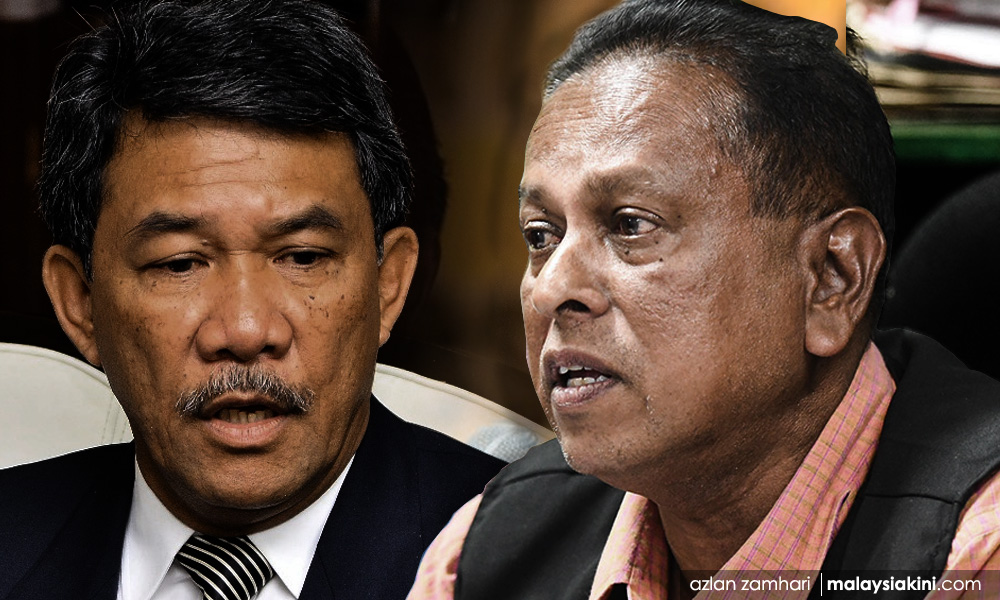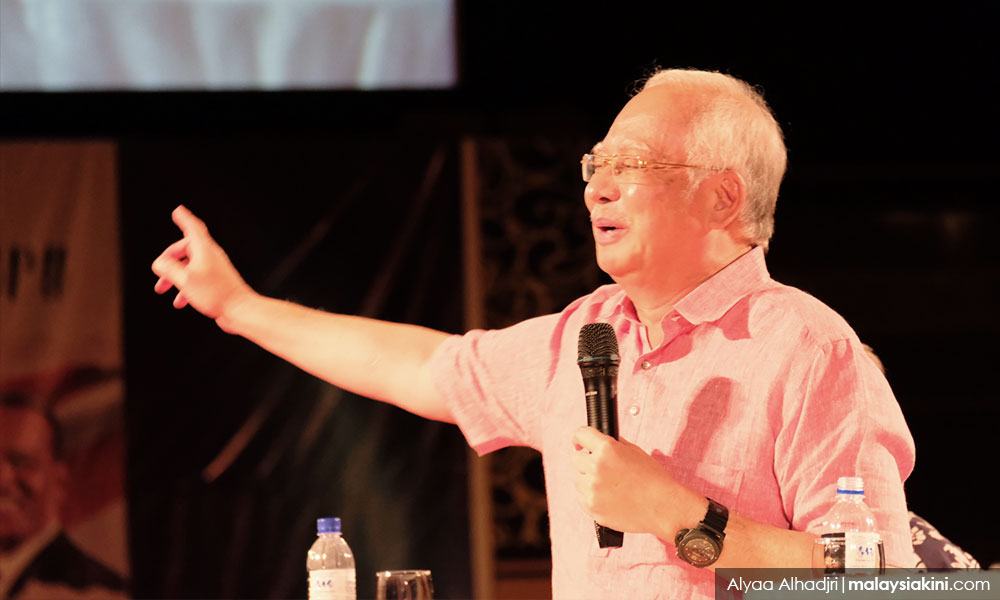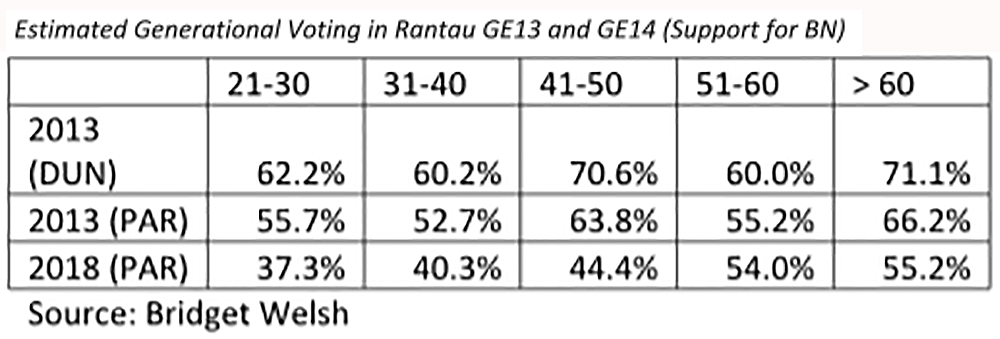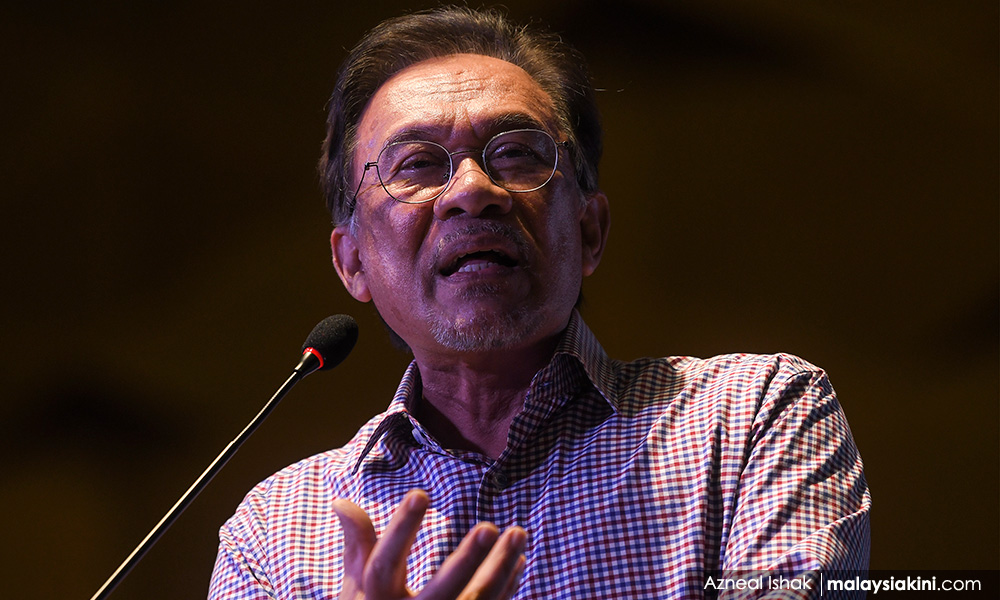
In the seventh post GE-14 by-election, the now bustling town of Rantau is capturing national attention. Flags, cars and traffic have turned this sleepy town into a national political barometer.
This contest, involving 20,926 voters, will be yet another assessment of Pakatan Harapan’s performance in an important swing state. Negeri Sembilan was an integral part of the coalition’s national victory and one of the states it managed to capture from Umno. As such, the result will speak of its ability to hold onto the base it secured almost a year ago.
The contest is also a gauge of Malaysia’s future national leadership. There are two additional tests on the line – the leadership of Umno – and, to a lesser extent, the ability of Anwar Ibrahim (now based in neighboring Port Dickson) and his party PKR to deliver the votes for the governing coalition.
Both Umno and Pakatan, Mohamad Hasan and Anwar, are seeking redemption in Rantau. The most meaningful impact of Rantau, however, will be whether voters reject the divisive racialized politics post-GE14 narrative in favour of more inclusive governance and return the country toward a path of greater multi-ethnic harmony.
Umno leadership
Earlier results of GE14 and GE13 (analyzed at the polling station levels) offer important insights into the contest. The first factor that stands out is the pull of Mohamad Hasan. While he is now under fire for his alleged multi-million ringgit mansion, he has been a popular figure in Rantau, seen as affable and accessible, with political clout as a local warlord and former Chief Minister for three terms.
We see, for example, a pattern of split voting in Rantau in GE13, in which Mohamad, contesting for the state seat, captured a larger share of the vote than Umno did for parliament, 64.7 percent versus 58.7 percent respectively (or an advantage of 6 percent).
The fact that Mohamad is now acting president of Umno assures that this contest is about his leadership of the party.
Mohamad was part of the faction in the party that somewhat distanced itself from Najib Tun Razak in last year’s June party election. Mohamad (along with close ally and fellow Negri Sembilan MP Khairy Jamaluddin) are seen to want to move the party out of Najib’s 1MDB shadow, and to return the party towards a more multi-racial middle ground.
This is hard to do given that Mohamad (and Khairy) governed during the Najib era and the intensification of a racialized ‘survivalist’ agenda adopted by the party as a whole since GE14.

It is being further complicated as Najib (above) is continuing to inject himself into post GE-14 Umno campaigns, overshadowing Mohamad in his own campaign.
Mohamad’s candidacy, however, will shape whether the party continues to have leaders that are comparably more racially moderate and capable administrators.
Decisive power of youth vote
Ultimately it will be the young people who will decide the Rantau outcome. Voters under 40 make up 41.3 percent of the electorate, with 17.7 percent of those under 30. I have argued elsewhere that young voters were a crucial determinant in GE14.
This was the case in Negri Sembilan as well. While Rantau was uncontested in 2018, the results from the parliamentary contest show that the BN lost the majority of younger voters. The steepest erosion was among voters under 30, an estimated drop of 18.4 percent.
This group will be decisive in the outcome, as Rantau is a highly competitive contest in which either side can win. The pull of young leaders, notably Khairy Jamaluddin, in this area will be important, as will whether Pakatan Harapan can convince younger voters to stay with them.

Personal leadership and party appeals
Rantau’s pattern of generation voting shows another important national trend. Umno lost support among its ‘older’ base as well, an estimated loss of 11 percent. Voters above 60 left the Umno fold, following Mahathir. The Tun M factor was particularly important in what I have called the Umno Belt – Malacca, Negri Sembilan and Pahang.
This speaks to the challenge Anwar Ibrahim (below) faces in maintaining the Pakatan Harapan base electorally. Now based in Negri Sembilan in Port Dickson, PKR’s leader has campaigned hard in Rantau, appreciating that the seat is in part about his ability and that of this party to win votes.

A difficult challenge Pakatan Harapan faces is resisting making this contest about individuals, and working together for the coalition as a whole. Rantau will showcase the coalition’s ability to work together, especially the cooperation of Pakatan’s leaders Mahathir and Anwar.
The fact, however, is that this is a PKR contest. PKR’s appeal nationally is being tested. Ironically, as the narrative of this contest has been focused on national issues, little attention has centred on the state level.
This is especially ironic given that Rantau is a state contest, in a state led by PKR. While it has been less than a year, the Negri Sembilan state government led by chief minister Aminuddin Harun has been largely seen to have governed well, with comparatively strong economic performance and increased investment to the state.
The Rantau campaign shows how little attention is being placed on policies and performance at the local level. Instead attention has been focused on race and inclusion.
PKR’s traditional strength has been its multi-ethnic appeal. Rantau with its mixed ethnic configuration (comprised of 54 percent Malays, 19 percent Chinese, 26 percent Indians and 1 percent others) will showcase its performance to reach across communities.
Indian GE 14 swing
Along ethnic lines, all the communities will matter given the competitiveness of the contest. Previous voting trends, however, show that in Rantau a swing in voting among the Indian community proved decisive in the GE14 parliamentary contest. 2018 witnessed a 23 percent swing among Indians in support in favour of PKR.
The decision to field Indian candidate Dr. Streram recognizes this dimension, but it rests on the assumption that Indians will vote for him and, more importantly, voters will cross ethnic lines.

Rantau speaks to the difficulty both PKR and Pakatan Harapan as a whole have faced in assuring that non-Malays are represented in the current government, while at the same time assuring Malays that they are an integral part of the government.
The focus of Pakatan Harapan has been on trying to address its Malay deficit in support, as opposed to its core non-Malay base, and there has yet to be a broad multi-ethnic inclusive policy agenda.
Rantau showcases the need to make sure all Malaysians, irrespective of race, are being represented, and the deep-seated challenges of moving politics away from the deeply-rooted ethnicized lenses and practices.
The recent racialized turn of the campaign in provocative posters shows that parties, especially the BN, rely on this form of campaigning. Rantau voters have an opportunity to reject this mode of campaigning.
Minor PAS factor
Finally, Rantau as a contest is different from the past two elections in that on the surface PAS is not as important a factor in shaping the outcome. PAS managed to only win an estimated 4.6 percent of the 2018 parliament vote in Rantau, and only 8.1 percent of the Malay vote. PAS captured 15.9 percent of the Malay vote on average in Negri Sembilan as a whole, and in Rantau it was less than average.
The Umno-PAS alliance is not as centre stage in Rantau as it has been in the last two by-elections, as this is largely an election about Umno and PKR. This said, the closeness of the race can be influenced by PAS supporters.
This means that in many ways Rantau is an important indicator of future trends for Malaysia. It will show whether Umno can redeem itself (at least electorally), whether Anwar and PKR have emerged as the strongest multi-ethnic alternative and ultimately, whether unity rather than division, moderation over polarization will be the path ahead. - Mkini


No comments:
Post a Comment
Note: Only a member of this blog may post a comment.